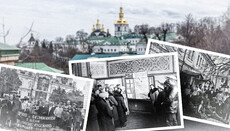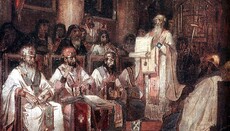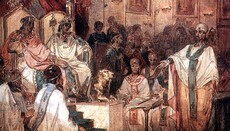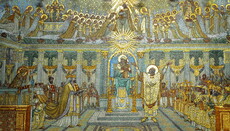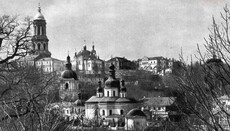New Martyrs of the XX century: How it began and what it led to
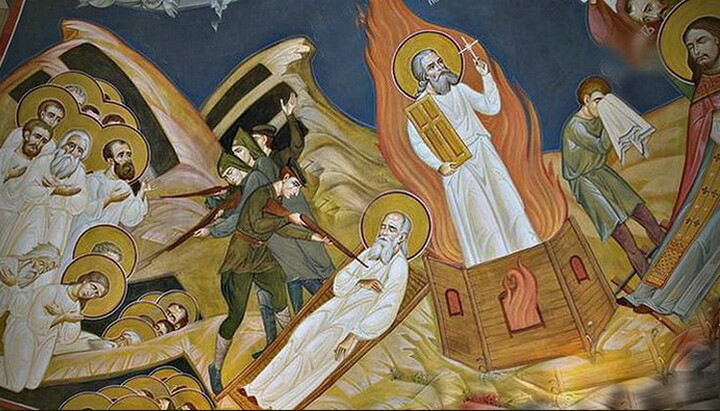
The UOJ begins a series of publications on the New Martyrs of the 20th century. Given today's persecutions against the Church, their example is needed more than ever.
Persecutions against the Church in the 20th century are unprecedented in terms of their scale and duration. By the beginning of the 1917 revolution in the Russian Empire, there were approximately 142,000 clergymen. By 1939, only 300 of them remained free in the USSR, with only 4 bishops among them. The others were tortured, executed, or languished in prisons and labor camps. This is just the clergy, and when considering all believers, the numbers reach into the millions.
Even the cruelest persecutor of early Christian centuries, Emperor Diocletian, couldn't have dreamed of such scale. His persecutions lasted only 9 years, while the Soviet persecutions, with varying intensity, continued for 70 years.
Today, the Church of Christ is also persecuted in Ukraine. True though, the magnitude is not the same today. The persecutions aren't so cruel as they used to be, at least not yet. But there are people who face beatings, harassment, threats; there are people whose churches are taken away, who are expelled from their homes. There are people against whom criminal cases are opened, and they are imprisoned. The faithful children of the Ukrainian Orthodox Church need support, they need the example of people who have already walked this difficult path and endured it without breaking. Above all, they need their prayers and intercession before the throne of God.
Holy New Martyrs and Confessors, pray to God for us!
Before moving on to the description of the lives of specific New Martyrs, it is necessary to talk about the general nature of persecutions, their logic, and conditional periodization. This is especially important because current persecutions and attempts to destroy the UOC fit into this logic.
Persecutors, as a rule, are not creative; they repeat already well-established historical patterns, often unknowingly due to their intellect and education. "What has been will be again, what has been done will be done again; there is nothing new under the sun" (Ecclesiastes 1:9). This, to some extent, can help us anticipate further steps and try to brace for them.
There are different perspectives on the periodization of persecutions against the Church in the USSR. They mainly depend on criteria and rely on the acceptance of certain documents such as the Decree of 1918 "On the separation of the church from the state and the school from the church" or the Secret Circular "On measures to strengthen anti-religious work" of 1929.
We will divide the persecutions into conventional periods based on the methodology of the Church's destruction. This will make it easier to compare these persecutions with current times and draw conclusions and predictions. It should be noted that today we observe some shift in the methods of combating the Church, what used to happen sequentially is now happening simultaneously.
Some stages of what happened then are not yet visible today but may well come, and some methods today are simply impossible to imagine due to the fundamentally different internal and external political situation in Ukraine and the USSR, respectively.
The First Period of Persecutions
This period lasted approximately from 1917 to 1922. It was characterized primarily by the absence of a legitimate legislative basis for punishing clergy and believers. This means that there was a significant degree of high-handedness, not in the sense that the higher authorities did not want anything, and everything was done locally. Instead, local authorities acted at their discretion, following the general trend of fighting against the Church.
Believers were often dealt with by a revolutionary mob or some group of Red Army soldiers who carried out reprisals, guided by the principle of "revolutionary expediency", as in the case of the killing of St. Vladimir, Metropolitan of Kiev. Revolutionary tribunals, consisting of people not burdened with morality or intellect, often pronounced judgments at their discretion.
These judgments varied greatly; for the same offense, one could be shot, while another might receive public condemnation. Persecutors acted in an arbitrary way, working towards the common goal of destroying the Church with varying zeal and inventiveness.
Today in Ukraine, we see a similar picture. Local self-government bodies make completely illegal decisions to ban the UOC in their territory, guided by the same principle of political expediency.
But this does not happen everywhere. The bans themselves also differ in content. Attacks on churches and monasteries are mainly carried out by various activists who often incite a crowd with false accusations against the UOC. With so-called public support, as well as with the connivance (sometimes reaching direct participation) of local authorities and law enforcement, they commit various levels of violence.
But a legislative framework is on the horizon, which, if adopted, will mark the entry of the struggle against the Church into the legislative mainstream.
The Second Period of Persecutions
It began around 1922 and was marked by the adoption of the Soviet Criminal Code, the Decree "On the confiscation of church valuables," and the establishment of the Renovated Church, which was intended to split the true Church and destroy it.
The Decree "On the confiscation of church valuables" was issued against the backdrop of a famine that engulfed many provinces at that time. This factor was fully utilized in the struggle against the Church. In a notable letter from V. M. Molotov to the members of the Politburo dated March 19, 1922, V. I. Lenin wrote: "It is precisely now and only now, when people are eating each other in famine-stricken areas, and hundreds, if not thousands, of corpses lie on the roads, that we can (and therefore must) carry out the confiscation of church valuables with the most furious and ruthless energy, stopping at nothing to suppress any resistance. [...] The confiscation of valuables, especially the richest lavras, monasteries, and churches, must be carried out with ruthless determination, absolutely stopping at nothing and in the shortest possible time. The more representatives of the reactionary bourgeoisie and the reactionary clergy we manage to shoot in this regard, the better."
While in the 1920s the destruction of the Church occurred against the backdrop of famine, which justified any cruelty, today it happens against the backdrop of war, which in the eyes of the public justifies the infringement of the right to freedom of conscience for millions of believers.
Are church valuables being confiscated today? There is no centralized campaign as such, but when a community loses its church along with all its internal furnishings, icons, lamps, church utensils, and so on, what guarantees that, having fallen into the hands of UOC opponents, all this will remain in place?
In this period, i.e., in the 1920s, authorities attempted to give persecutions some legitimacy and organize showcase trials supposedly proving the illegal activities of clergy.
However, the attempt failed. Open trials revealed the absurdity of the accusations and the bias of the judges. For example, the trial of Metropolitan Veniamin of Petrograd in 1922 could be considered such a legal process. Together with him, 86 people appeared before the court, including Vicar Bishop Venedit, the heads of almost all major Petrograd cathedrals, professors of the Theological Academy, Theological Institute, and the university, students, and ordinary laypeople. They were accused of resisting the confiscation of church valuables. Metropolitan Veniamin and 9 others were sentenced to execution, while the rest received various terms of imprisonment.
The accusation was essentially absurd because, in early 1922, the Church, represented by Patriarch Tikhon, called on the faithful to donate any church valuables for the needs of the starving, except those with liturgical use: antiminses, Eucharistic vessels, and some other items. Moreover, Bishop Veniamin actively supported aid to the starving.
The court issued a guilty verdict, but from a PR perspective, as we would say today, the authorities achieved the opposite effect – the public was convinced of the injustice of the verdict.
Something similar is happening today. Authorities, for some reason, organize high-profile showcase trials against prominent hierarchs, such as Metropolitan Pavel, the abbot of the Kiev-Pechersk Lavra, or Bishop Longin of Bancheny. In the latter case, it is absurd: to persecute a man who adopted 400 children, a father of orphans with severe illnesses, the founder of several monasteries and hospitals, an example of evangelical mercy and kindness! And when authorities sent a squad armed with rifles and dogs against monks and disabled children, it was a blatant mockery! The whole world saw the true face of the persecutors!
Ukrainian authorities have embarrassed themselves thoroughly in front of their people, the Romanians, and the international community as a whole. And it's unlikely that the initiators of this performance wanted to achieve such an effect. Why did they do this? It's unclear. Perhaps it's about the level of intellect and the absence of conscience? Who knows?
It's worth mentioning the Bolsheviks' use of the Renovated Church to destroy the true Church. Much has already been written about the similarity between this organization and the OCU. The scheme is the same: take away churches from the Orthodox and give them to the Renovationists. Since people don't want to attend the Renovationists, it turns out that they don't go to the true Church because they have nowhere to go, and they don't go to the Renovationists because they have no reason to.
But the experience of Bolshevik persecutions indicates that authorities not only supported the Renovationists to destroy the Church but also tried to foment schisms within the Church. After the death of Patriarch Tikhon in April 1925 and the arrest of the locum tenens Metropolitan Peter (Polyansky) in December 1925, the highest church administration became quite entangled. Ultimately, Metropolitan Sergius (Stragorodsky) became the de facto leader, but his canonical status was quite exotic: the deputy of the locum tenens.
Naturally, the authorities skillfully fueled conflicts between his supporters and opponents, especially since the actions and decisions of Metropolitan Sergius were, to say the least, ambiguous. They supported one side, then the other, sowing chaos in the Church.
To some extent, the authorities tempted almost all bishops, offering them relative normalization of life in exchange for compromises and cooperation.
This is what can be expected from the current Ukrainian authorities: we will stop or weaken persecutions in exchange for this and that. They will propose this deal and seek bishops who will agree to it.
For example, they will start supporting advocates of autocephaly and at the same time those few who continue to advocate for administrative unity with the ROC. This method has been tested many times in history: support proponents of opposing radical views and thus undermine the organization itself.
Our strength lies in unity!
The Third Period of Persecutions
The third period of persecutions was marked by the adoption of the secret circular "On Measures to Strengthen Anti-Religious Work" in 1929. Following this, in February 1930, the government passed a resolution "On the Struggle Against Counter-Revolutionary Elements in the Leadership of Religious Associations," which mentioned the "consolidation of the counter-revolutionary asset within the framework of religious organizations." In other words, it was claimed that the counter-revolutionary element had settled not just anywhere but specifically in the Church, and that's where it needed to be sought.
This narrative is strikingly similar to the modern narrative, according to which collaborators have infiltrated the UOC, and therefore various law enforcement agencies should direct their efforts precisely there.
If, in the previous period, Bolshevik authorities tried, albeit unsuccessfully, to create the appearance in the eyes of the public that the reprisals against priests and believers were lawful and just, now few paid attention to that. In the 1930s, terror against the Church and the people in general in the USSR reached unprecedented scales of cruelty. Priests were imprisoned and shot on completely fabricated charges that no one believed, including the NKVD officers and other punitive authorities themselves. They were accused of being agents of English, Japanese, German, and a dozen other intelligence agencies simultaneously and charged with creating underground groups aimed at overthrowing Soviet power.
Often, through sleep deprivation and other, sometimes very sophisticated, torture methods, they managed to extract confessions of all these impossible crimes and sometimes even name accomplices.
In our time, priests are accused of being "Kremlin agents." This label is attached to all supporters of the UOC without bothering to provide any evidence. Well, with "Kremlin agents", as we know, the conversation is short.
The repression against the Church and all "anti-Soviet" elements, in general, reached its peak in 1937–38. In November 1937, the People's Commissar of State Security of the USSR, Nikolai Yezhov, sent a report to Joseph Stalin, stating that from August to November 1937, only in 4 months, 31,359 "churchmen and sectarians" were arrested, including 166 bishops and archbishops, 9,116 priests, 2,173 monks, and 19,904 of the "church-sectarian kulak elite." Of them, 13,671 people were sentenced to execution, including 81 bishops and archbishops, 4,629 priests, 934 monks, and 7,004 of the "church-sectarian kulak elite."
"As a result of our operational measures, the episcopate of the Orthodox Church has been almost completely eliminated, which significantly weakened and disorganized the Church," wrote N. Yezhov.
As is known, in 1927, Metropolitan Sergius (Stragorodsky) issued a Declaration of Loyalty of the Church to Soviet power and practically handed over all the reins of governance to the godless authorities. From now on, all church decisions were coordinated with the authorities, and without their approval, it was impossible to ordain a deacon, a priest, let alone bishops. Conversely, opening a criminal case against a priest often meant the decision of the church authorities to ban him from serving as an enemy of the people.
Metropolitan Sergius also stated in interviews with foreign media that there were no persecutions against the Church in the USSR and, on the contrary, there was an unprecedented freedom of religion compared to other countries. It was, of course, an absolute lie, but adepts of such a policy justified it by claiming that this was how they were saving the Church from complete destruction.
However, in the 1930s, not only those who disapproved of Metropolitan Sergius' policies, subsequently called "Sergianism", but also supporters of Sergius, loyal and obedient to the Soviet authorities, were subjected to repression.
Renovationists did not escape repression either. The Bolsheviks simply discarded them as unnecessary and destroyed them alongside everyone else, despite their past merits and assistance in the destruction of the Church.
All this teaches us not to compromise with the authorities on matters of faith, where the cost of apparent tranquility becomes a betrayal of the Church, a violation of its unity and purity of faith.
Perhaps in the USSR, by the end of the 1930s, the Church would have been completely destroyed, but then the Second World War began. In 1943, Joseph Stalin radically changed the state's attitude toward the Church. He not only allowed the convening of a Local Council to elect a patriarch but also provided transportation, housing, and other material support for it. Many bishops and priests were released from prisons, churches were opened, the Journal of the Moscow Patriarchate began to be published, and so on.
All this was, of course, a meager consolation compared to the scale of the destruction of the Church in the previous years, but the believers started to breathe a little easier.
The Fourth Period of Persecutions
But the Church did not remain in relative tranquility for long. With the coming to power of Nikita Khrushchev, persecutions against the Church resumed with renewed vigor but through somewhat different methods. In July 1954, the Central Committee of the Communist Party of the Soviet Union adopted a resolution "On Major Deficiencies in Scientific-Atheistic Propaganda and Measures for Its Improvement," which marked a new stage in the struggle against the Church. At this stage, the emphasis was not on the physical destruction of priests and believers, but on their re-education in the spirit of communism. If before they were thrown into prison, now they were placed in psychiatric hospitals, as was the case with St. Amphilochius of Pochaiv.
Those who did not want to be re-educated became outcasts in society, excluded from public and cultural life. Existing church communities were burdened with exorbitant taxes, many churches were closed and destroyed. Criminal persecution continued but became softer compared to the 1930s.
If earlier people were convicted of treason to the Motherland, now they were punished for idleness and creating groups "harming health", which could be understood as church communities.
During this period, a huge amount of anti-religious literature and films were produced. Lecturers against religion toured the country. Former priests who renounced their faith and proved their loyalty to the authorities by slandering the Church and their former colleagues were in special demand as speakers. Authorities were convincing the people that the Church was on the verge of disappearance. Nikita Khrushchev promised that by the end of the "seven-year plan", i.e., by 1965, he would "show the last priest on television."
However, the Khrushchev-era anti-religious campaign also failed.
Epilogue
The same outcome, sooner or later, awaits all anti-Church campaigns. However, the persecutors of the Church cannot seem to learn this lesson for two thousand years. New persecutors emerge, believing once again that they can destroy the Church. In the end, they, too, will realize their powerlessness, but at what cost?
When the Church persecutor Saul went to Damascus with the intention of destroying Christianity, the Lord appeared to him and said, "Saul, Saul, why do you persecute me? It is hard for you to kick against the goads" (Acts 9:5). So, it is difficult for all persecutors throughout the ages. They all fade away, and the Church of God will live forever, as the Lord promised: "...I will build My church, and the gates of Hades shall not prevail against it" (Matthew 16:18).

